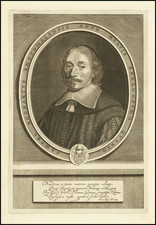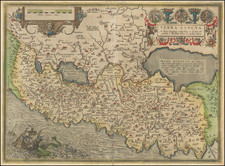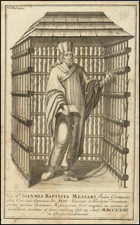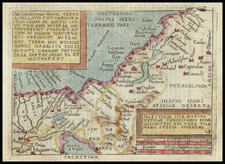Rare allegorical print of showing the life of King David the Prophet.
This is one of seventeen engraved plates from La Saincte Bible Françoise, Selon la vulgaire Latine reueuë par le commandement du Pape Sixte V, published in Paris in 1621.
King David the Prophet
In European Christian culture of the Middle Ages, David was made a member of the Nine Worthies, a group of heroes encapsulating all the ideal qualities of chivalry. His life was thus proposed as a valuable subject for study by those aspiring to chivalric status. This aspect of David in the Nine Worthies was popularized firstly through literature, and was thereafter adopted as a frequent subject for painters and sculptors.
David was considered as a model ruler and a symbol of divinely-ordained monarchy throughout medieval Western Europe and Eastern Christendom. David was perceived as the biblical predecessor to Christian Roman and Byzantine emperors and the name "New David" was used as an honorific reference to these rulers. The Georgian Bagratids and the Solomonic dynasty of Ethiopia claimed a direct biological descent from him. Likewise, kings of the Frankish Carolingian dynasty frequently connected themselves to David; Charlemagne himself occasionally used the name of David as his pseudonym.
Western Rite churches (Lutheran, Roman Catholic) celebrate David's feast day on December 29 or on October 6. Eastern-rite on December 19. The Eastern Orthodox Church and Eastern Catholic Churches celebrate the feast day of the "Holy Righteous Prophet and King David" on the Sunday of the Holy Forefathers (two Sundays before the Great Feast of the Nativity of the Lord), when he is commemorated together with other ancestors of Jesus. He is also commemorated on the Sunday after the Nativity, together with Joseph and James, the Brother of the Lord.











![De Schepping der Wereldt Volgens de Beschryving van Mozes. 1 Plaat [in set with] De Schepping der Wereldt Volgens de Beschryving van Mozes. 2. Plaat](https://storage.googleapis.com/raremaps/img/small/102641.jpg)


![[Women At Work]](https://storage.googleapis.com/raremaps/img/small/87602.jpg)